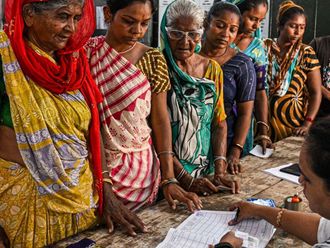The fact that an estimated 2.2 million, or 50 per cent, of all children in India’s capital suffer irreversible lung damage is not enough of a disincentive for its citizens to cut down on their firecracker-bursting mania every Diwali. On Wednesday, as crackers were exploded with impunity well into the wee hours of Thursday, the pollution in Delhi’s air entered the severe-plus emergency category, posting 10 times the safe limits.
And this, despite the country’s Supreme Court ruling that no fire crackers would be burst outside of 8pm-10pm on Diwali, that only green crackers be manufactured and used with the police ensuring strict adherence to the regulations.
It is a matter of exceptional shame then that the capital of the world’s largest democracy showed scant regard for any of the rulings. The severity of air pollution in Delhi has been a breathless tragedy for years. In fact, air pollution in India has been headlining a host of international studies because it is the fifth-largest killer in India with an estimated 1.5 million dying because of it.
What is causing this national distress?
The list is long: Poorly-controlled vehicle emissions, industrial violations on air emissions, insufficient government push for the use of alternative energy, traditional fossil fuel-burning by homes, industries and power plants, dust-generating practices from civic construction projects, and crop, wood and refuse burning, to name only a few.
Then there’s a basic contributor: Many cities, towns and villages in India are riven by dusty roads, a municipal issue that has found no solutions over the decades, even as rampant population growth necessitates an unchecked urban sprawl that challenges policies and planning.
Of course, there are a host of air pollution prevention protocols by the government.
On paper, many initiatives exist such as increasing electric public transportation, higher subsidies on electric vehicles, incentivising commercial establishments to switch to green energy, tightening mass vehicle emission standards, and strict punitive measures for regulatory breaches, to name some. India is also in conversation with the C40 Cities Climate Leadership Group to address air pollution solutions. So why are 11 of the 12 cities in the world with the highest air pollution levels still located in India, as reported by the World Health Organisation?
It’s because there is little to middling implementation of the regulations at every level by the government, both state and central, a problem compounded by the large degree of public apathy, as the Diwali firecracker syndrome demonstrates each year.
If India is truly to become the next big superpower, its 1.35 billion people need to wake up to clean air. As the Latin saying goes: Dum Spiro Spero (‘While I breathe, I hope.’).








